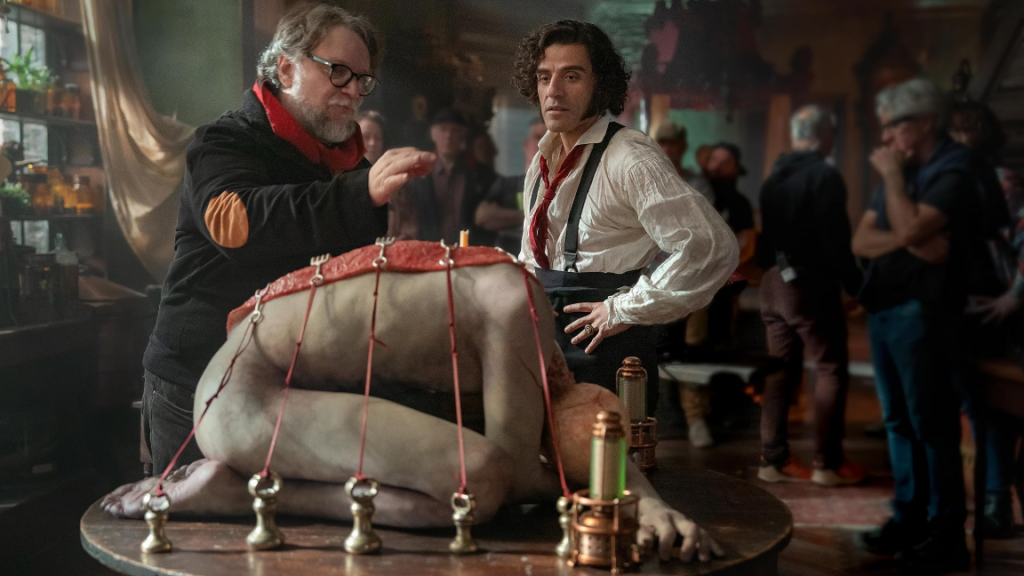Del Toro’s ‘Frankenstein’ is packed with hidden references. Here are 10 to look out for.
Others are reading now
Guillermo del Toro’s Frankenstein has quickly become one of Netflix’s most acclaimed releases of the year.
While Mary Shelley’s 200-year-old novel remains the foundation, del Toro reshapes the material with new characters, a shifted timeline, and dozens of hidden nods to classic adaptations.
Here are 10 small details, Easter eggs, and behind-the-scenes secrets that you may have missed.
1. A different century, a different war
The first major shift attentive viewers will notice is the setting.
Rather than the late 18th century, the story unfolds during the Crimean War of the 1850s.
Also read
The new setting gives Victor easier access to bodies from the battlefield for his experiments. No grave robbing required.
2. A villain the novel never knew
Christoph Waltz’s Heinrich Harlander, an arms dealer with an unnerving calm, does not exist in Shelley’s novel.
Del Toro created him to embody greed and moral compromise.
His demand that Victor preserve his brain in the creature ties ambition and monstrosity together in a way the book only hints at.
3. A reimagined Frankenstein family
Del Toro also reshapes Victor’s home life.
Also read
Ernest is gone, William is older, and Victor’s father, renamed Leopold, is no longer a grieving Enlightenment gentleman but a strict, authoritarian figure who pressures his son even during anatomy lessons.
The physical punishment Victor endures adds psychological weight absent from the original text.
4. Elizabeth rewritten with Mary Shelley in mind
Elizabeth, portrayed by Mia Goth, may be the film’s biggest reinterpretation.
Instead of a passive fiancée, she is written as Victor’s intellectual equal. Del Toro has said she’s partly inspired by Mary Shelley herself.
Her engagement to William, not Victor, is also a new invention.
5. The creature beneath 42 prosthetics
Also read
Jacob Elordi is nearly unrecognizable.
The creature’s look required 42 prosthetic elements, dentures, and a single clouded contact lens.
His physicality draws from the Japanese dance form Butoh—slow and contorted—and from observing the instinctive movements of his own dog.
6. Anatomy lessons in every scar
The creature’s body isn’t designed solely for horror.
Del Toro based it on 19th-century anatomical teaching models and, most strikingly, the flayed statue of the Apostle Bartholomew. Even the cross-shaped apparatus used to assemble him blends scientific realism with religious symbolism, reinforcing the themes of creation and sacrifice.
7. A tower laboratory built by hand
Also read
Victor’s laboratory is located inside an abandoned cliffside water tower.
It’s a deliberate homage to James Whale’s iconic labs from the 1931 and 1935 films.
Almost everything was created physically rather than digitally. Del Toro insisted on practical sets so the actors could “feel” the world they were in.
8. Echoes of classic horror
Throughout the film, devoted fans will spot familiar names: Dr. Pretorius, Dr. Krempe, Professor Bernstein.
These figures draw from various Frankenstein adaptations.
Also read
A burned windmill, shadowy waterways, and retro laboratory switches borrow imagery from Universal and Hammer horror.
9. Clothing that tells a story
Costume design becomes another layer of homage.
The creature’s bandages and heavy coat evoke the look of Hammer’s monsters.
Elizabeth’s wedding gown directly mirrors the Bride of Frankenstein from 1935.
10. A production built with obsession
With 120 shooting days and a $120 million budget, del Toro pursued authenticity at every level.
Also read
Every corridor, every prop, every prosthetic was handcrafted.
Frankenstein, starring Oscar Isaac as Victor and Jacob Elordi as the creature, is now streaming on Netflix.
Source: Esquire; Netflix
This article is made and published by Camilla Jessen, who may have used AI in the preparation


